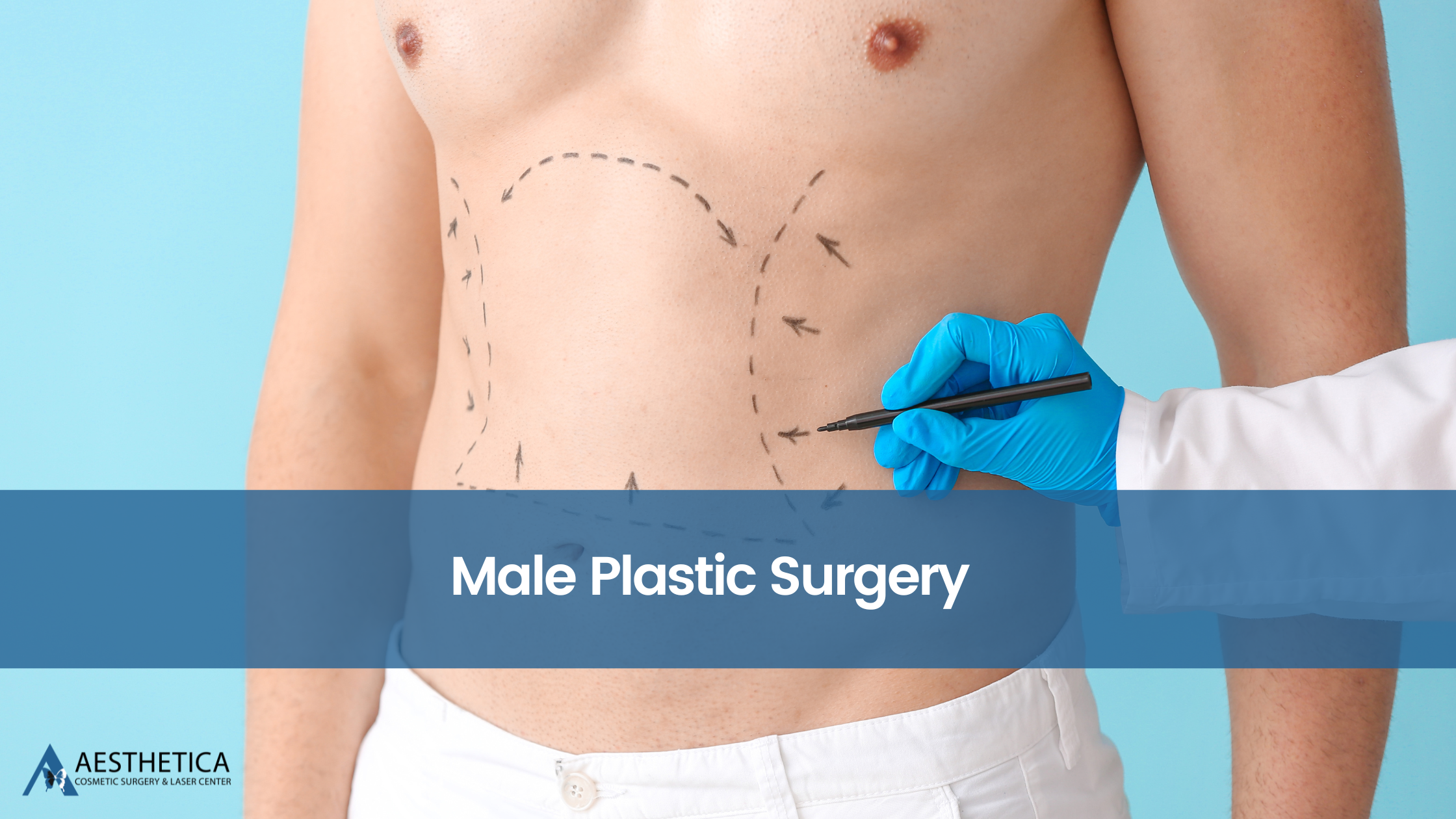The Different Types of Facelifts: What’s the Right One for You?6 min read


Melanie Jackson

As you age, it’s not just your skin that starts to show signs of wear and tear. The underlying structures of your face, including the muscles, fat, and bones, can also begin to sag and droop, leaving room for aesthetic imperfections.
A facelift might be the perfect answer to help turn back the clock on your appearance! This plastic surgery procedure can improve various visible signs of aging in the face and neck, such as:
- Sagging in the middle of your face;
- Deep creases below your lower eyelids;
- A drooping nose tip or upper lip;
- Excess skin and fine wrinkles in your lower face;
- Loose skin and deep creases along your neck.
What is a Facelift?
A facelift is a plastic surgery procedure that can help you address the aesthetic imperfections in your face and neck, resulting in a more youthful appearance. This surgery is often performed to improve the appearance of droopy or sagging skin in areas such as the neck and jowls. It can also be performed on the eyelids to remove excess fat and tighten drooping upper lids.
Did you know that there are different facelift options, each targeting specific areas of the face and neck? The right type of facelift for you will depend on your individual needs and aesthetic goals

What are the Different Types of Facelifts?
When it comes to plastic surgery, there’s no one-size-fits-all solution because different people have different reasons for wanting to improve their appearance. For that reason, there are various facelift types to choose from.
#1: Traditional Facelift
The traditional facelift is the most comprehensive option for the most dramatic results. It can help correct deep wrinkles, sagging skin, and drooping facial muscles. However, it’s also the most invasive option, requiring a more extended recovery period.
#2: Mini Facelift
Mini facelifts are ideal for patients with mild to moderate skin laxity. This type of facelift focuses on the lower third of the face, including the cheeks and jowls. The incisions are placed in the hairline near the temples, extending down in front of the ear and into the lower scalp. The skin is then lifted, and excess fat is removed. The plastic surgeon may also tighten the underlying muscles and redrape the skin. This type of facelift can often be done using local anesthesia with sedation or general anesthesia. Recovery time is typically one to two weeks long.
#3: Mid-Facelift
Mid-facelifts focus on the area of the face under the eyes, the cheeks, and the top of the mouth. This type of facelift is ideal for those who have early signs of aging, such as sagging skin around the eyes.
In terms of invasiveness, the mid-facelift sits somewhere between the mini facelift and the traditional facelift. It can be performed in conjunction with other procedures, such as a brow lift or eyelid surgery. The goal of a mid-facelift is to improve the appearance of the middle area of the face by tightening muscles and repositioning tissue. This type of facelift can address sagging skin in the cheeks, nasolabial folds (i.e., the lines from the nose to the corners of the mouth), marionette lines (i.e., lines from the corners of the mouth to the chin), and jowls.
#4: Thread Lift
Thread lifts are a minimally invasive option for patients with mild to moderate skin laxity. This type of lift uses threads to lift and tighten the skin. The threads are usually made of absorbable material, which eventually dissolves. There are different types of thread lifts, and the right one for you will depend on your goals and concerns.
#5: Temporal Facelift or Brow Lift
A temporal facelift, also called a brow lift, is a plastic surgery procedure that improves the appearance of the forehead and eyebrows. This type of facelift can address wrinkles and sagging skin in the brow area.
Plastic surgeons can use several different techniques for a temporal facelift. The most common approach is creating an incision in the hairline near the temple, through which the surgeon will access the underlying tissue and muscles. The surgeon will then reposition or remove excess tissue to create a more youthful appearance.
#6: S-Lift Facelift
The S-lift is used on the lower third of the face (neck and jowls) and involves cutting the skin and revealing underlying tissue with an s-shaped incision. The muscles and tissue are strengthened using the lifted skin. Finally, the wound is closed with stitches. It is less invasive and takes less time to heal than a traditional operation than a traditional facelift.
#7: Cutaneous Lift (Skin Only)
A cutaneous lift, also known as a skin-only facelift, is ideal for patients who want to address wrinkles and sagging skin around the face. This type of facelift can give you more subtle results than a traditional facelift while still significantly improving your aesthetics!
#8: Deep Plane Facelift
A deep plane facelift is a more advanced type of facelift that lifts the muscular layer of the face as a whole, as well as fat and skin. This approach results in a more natural look and feel, as well as a longer-lasting result. In addition, it is often used to correct sagging in the mid-face, around the nose, mouth, and neck.
While a traditional facelift only addresses the skin, a deep plane facelift also tightens underlying muscles and connective tissue to provide additional support and prevent future sagging.
#9: Liquid Facelift
Liquid facelifts are a nonsurgical option for mild to moderate skin laxity. This type of lift uses injectable fillers to add volume and lift the skin. It can also help smooth out lines and wrinkles. Many different types of fillers can be used, so it’s important to consult yourself with a plastic surgeon to see which one is right for you.
Who is the Ideal Facelift Candidate?
The ideal candidate for a facelift is someone who is generally healthy and has realistic expectations for the results of the surgery. Most people who undergo facelifts are between 40 and 60 years old, but age is not necessarily a determining factor—you can be a young woman and still qualify for a facelift!
What is the Ideal Age for Facelift?
A facelift can be performed on people of any age, but plastic surgeons generally agree that the ideal age for a facelift is between 40 and 60 years old. This is because people in this age range typically have enough skin elasticity to allow for successful results. They also tend to have deeper wrinkles and sagging skin that a facelift procedure can correct.
Of course, there are always exceptions to the rule—if you feel like you would benefit from a facelift at an earlier or later age, don’t hesitate to consult with a plastic surgeon to see if it’s right for you!
With Dr. Chang, Your Facelift Procedure is in Good Hands!
Ready to undergo your very own facelift procedure? Come meet with us at Aesthetica Cosmetic Surgery and Laser Center for a complimentary consultation before moving forward with surgery! Board Certified Plastic Surgeon Dr. Phillip Chang will determine if you are a good candidate for these procedures. If everything matches up, our team will help you navigate the entire process, from beginning to the end! Also, don’t forget to check out our blog for more information on facelifts and plastic surgery trends!
Let Us Help You!
Our office can provide you with helpful information, schedule a free consultation, and walk you through the many services and procedures we provide.
Contact Dr. Chang's Office:
More Articles For You

When Do Boobs Stop Growing? Finding the Perfect Time for Breast Surgery
Ever wondered when your boobs finally decide to take a break from growing? Or you’re
Are Silicone Injections in Buttocks Safe?
In today’s world, where the aesthetic appeal of one’s body can often feel as though

Does a Mommy Makeover Include BBL?
Many women look forward to the blessings of motherhood. Having a child is a very

Male Plastic Surgery: Before and After
Women aren’t the only ones who want an aesthetically pleasing body. Men do too. And
